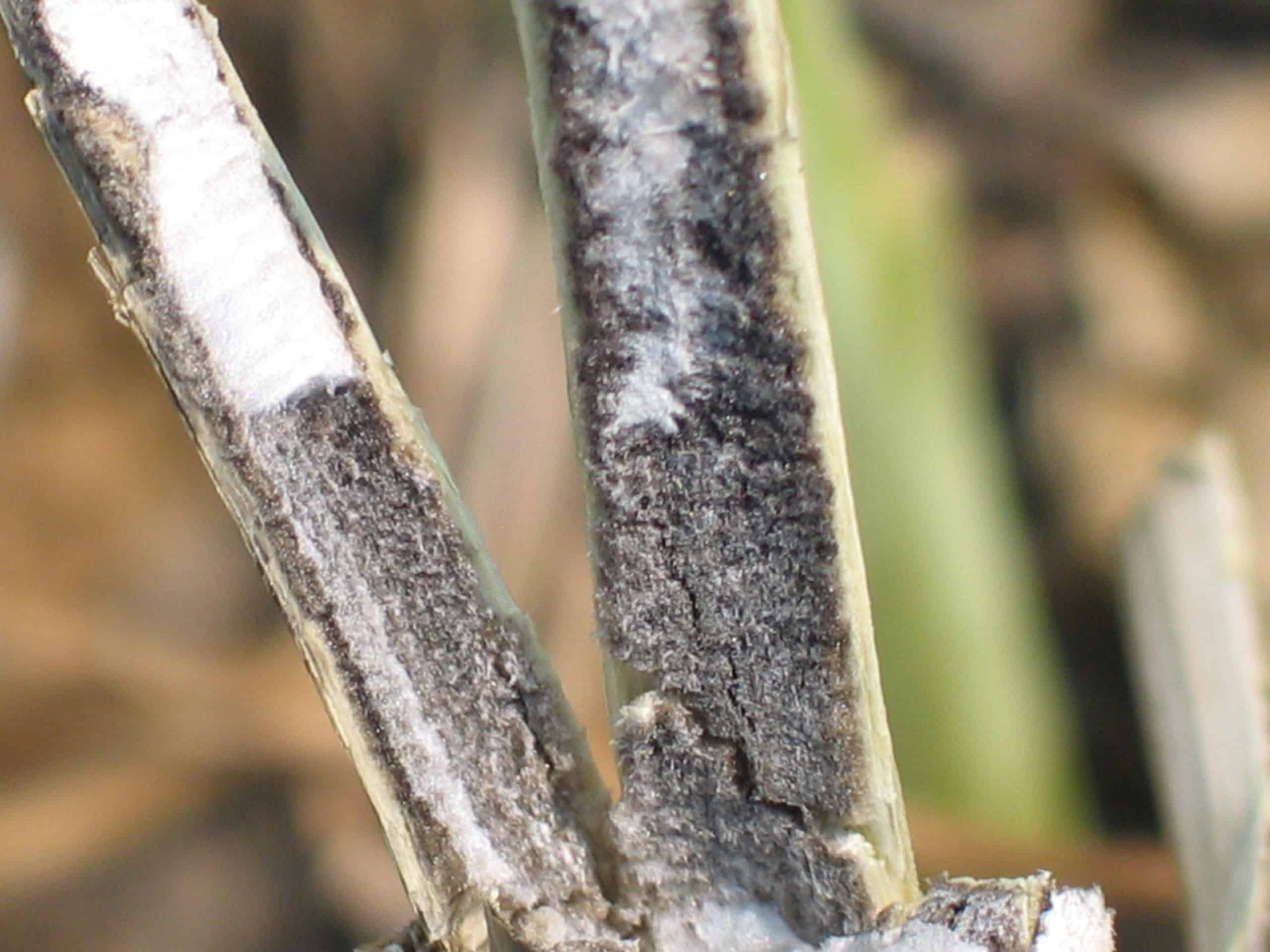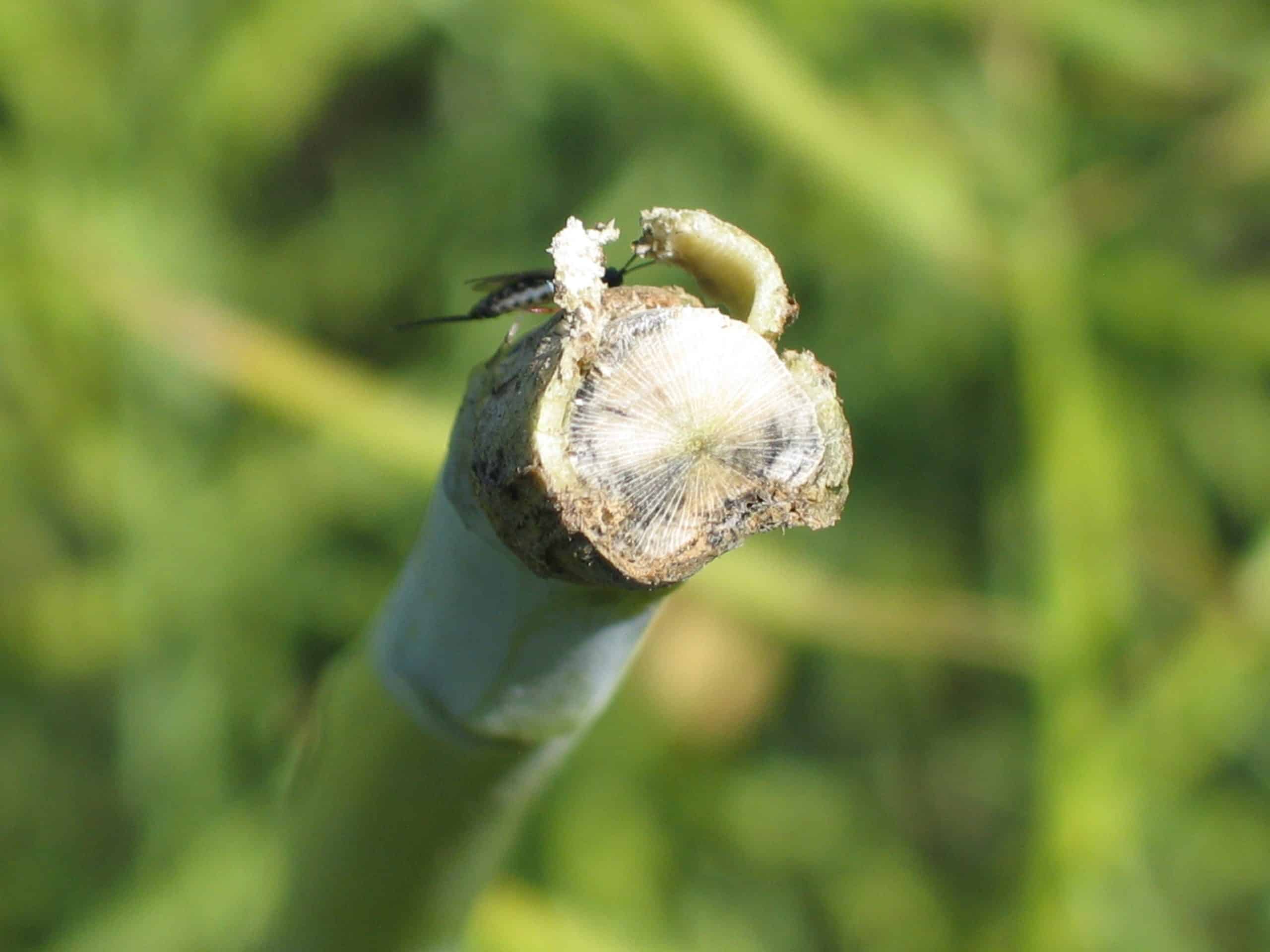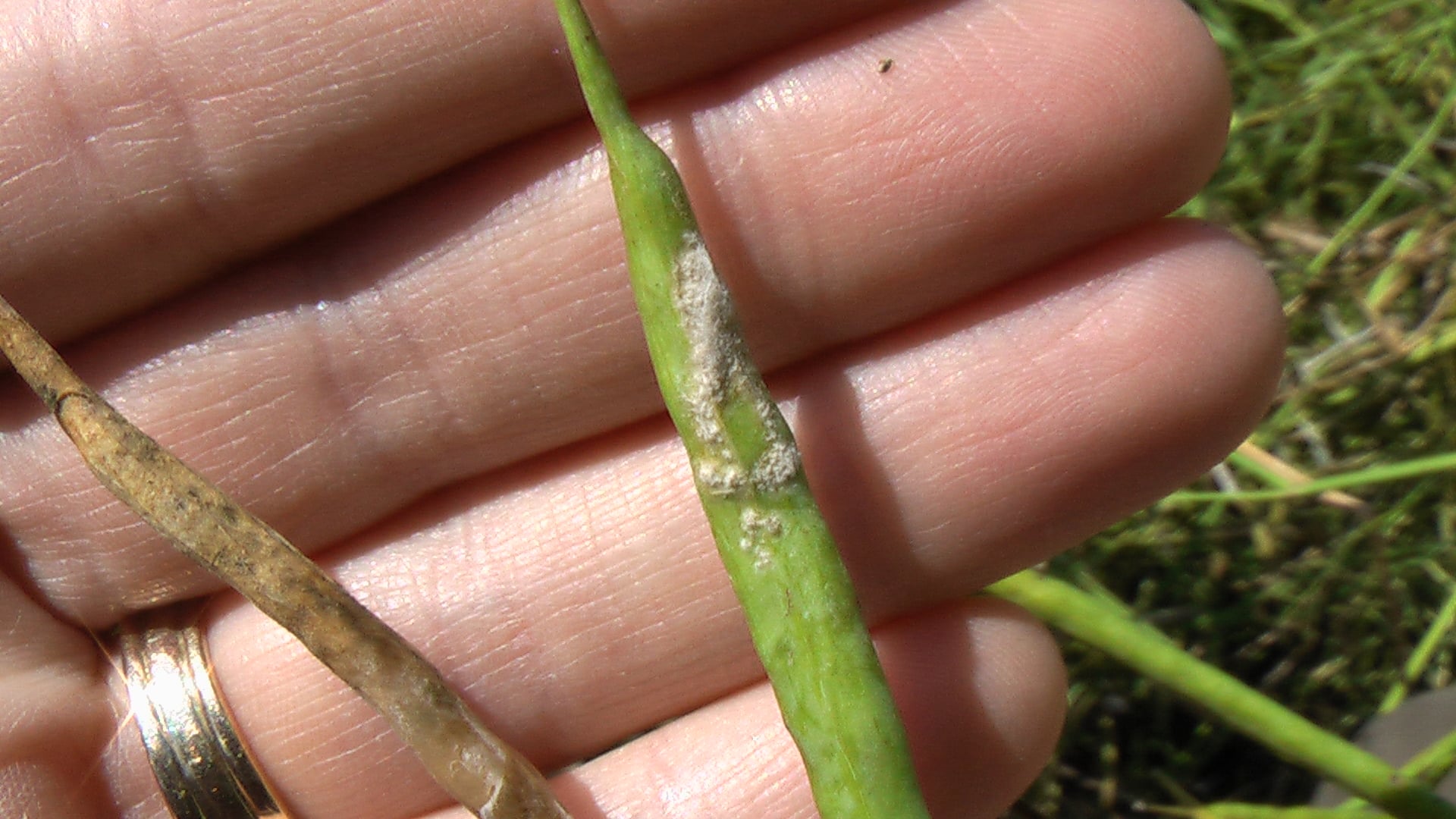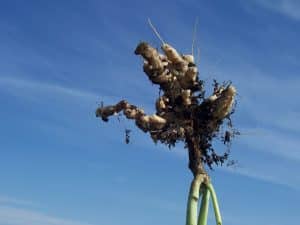
While you are out there checking to see if your crop is ready to cut/harvest is a perfect time to also check for disease! Likewise, the representative sampling technique used to accurately determine the stage of the crop is also ideal for disease scouting of your field. Pulling out a few plants and checking for the big three diseases, as well as any other issues, will save you an extra trip to the field. Early disease detection could save you thousands of dollars down the line!
Plus, checking your crop for diseases BEFORE swathing/harvesting (or even within the first week of cutting/straight cutting your crop) is much easier for identifying disease than it is scouting after harvest, all of the CCC agronomists agree. Watch our new pre-harvest disease scouting video for other helpful tips from the agronomists.
Here are some key notes about the big three diseases:
Blackleg
There have been a number of blackleg cases reported in various locations across the prairies, in the past few weeks. Be sure to check your field so you will be able to make the correct choice on next year’s variety. It’s not hard to spot if you follow the scouting tips provided on the new CCC blackleg video.
As the CCC agronomists explain in the disease scouting video, when looking for blackleg, the base of the plant is where you want to check. Simply cut the plant at the ground level and look into the stem for characteristic blackleg symptoms.

Sclerotinia
Fields with varying levels of sclerotinia have been found in various places across the prairies. The disease seems to be more prevalent both in fields that weren’t sprayed (which unfortunately received rain shortly after) and irrigated acres which may have been sprayed too late. Recent elevated humidity levels (which are desirable for the disease) may have also attributed to the number of cases popping up.
Although it is to late to make any management decisions for sclerotinia in this growing year, you can use your scouting to evaluate whether you made a correct decision regarding fungicide application (spray vs no-spray) for reference in future years. Make note of field infection levels, plant stand and yield potential and document environmental / growing conditions before and during flowering. This can provide a reference point when it comes to making Sclerotinia management decisions in future years.

Understandably, the weather can be very unpredictable so ideal or unfavourable conditions can sometime make good decisions seem incorrect later. By assessing your crop and the management decisions you made under the conditions each year, you will improve on future decisions and get this disease under control. Hindsight is always 20/20, but making note of each situation and outcome will improve your decision making for the next year and may prevent repeat mistakes.
Clubroot
Before you toss a blackleg and sclerotinia-free plant onto the ground, be sure to have a good look at and feel of the plant roots for any potential clubroot symptoms. Fields in a variety of locations across the prairies contain the disease, but early diagnosis means a better prognosis, especially with clubroot. Early diagnosis gives growers the opportunity to mitigate the situation in order to keep it from becoming a major issue on their fields.

Whether it is in your neighbour’s field, or a field half a province over, follow the management strategies discussed on our clubroot website and you won’t have to deal with potential yield losses due to clubroot.

